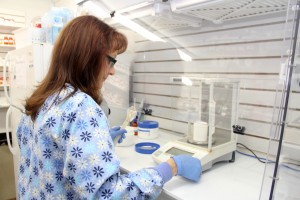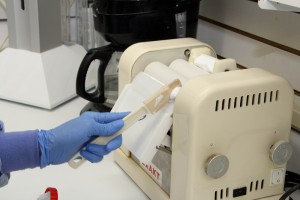Pain specialists are using a variety of compounded treatments to ease patient problems with their pain medications. Some patients are allergic to an ingredient in some of the medications, some cannot take oral medications, some are scared of injections, some medications are not available in the strength required for a particular patient, or side effects prohibit the use of the medications. This is where compounding pain medications can be a great service. Compounded medications are custom made for each patient. They are the same medications that are typically used to treat pain, but may be in a different strength or concentration than commercially available, or a different dosage form, such as topically. Topical dosage forms can work at the site of pain, can prevent systemic side effects compared to the oral dosage form, be used in higher concentrations than allowable orally, and prevents drug interactions.
Neuropathic and sciatic pain is especially difficult to manage for pain patients. Medications such as oxycodone, acetaminophen, amitriptyline, gabapentin, ketoprofen, baclofen, and lidocaine are commonly used for oral treatment of pain, with limited success. Some of these medications are limited by the amount or dose a patient can take due to toxicity. These medications can also cause side effects such as drowsiness, constipation or diarrhea, sedation, and stomach upset/nausea. Additionally, the medications may interact with other medications the patient is receiving. By compounding these medications into a single cream, the patient can apply the medication to the site of injury. This reduces the amount of medications a patient has to take, prevents drug interactions and side effects, reduces drug toxicity issues, and may provide more pain relief than the oral medications.
Cancer patients frequently suffer from pain due to the location of the tumor and treatment to destroy cancer cells. Chemotherapy medications are toxic, and are given in small doses to kill cells, and cause troubling side effects. A few of the side effects from chemotherapy include: nausea, vomiting, difficulty swallowing, neuropathy, skin and mouth sores, numbness and fatigue. The nausea, vomiting, difficulty in swallowing, and mouth sores can make taking oral medications difficult. By compounding medications into a cream or suppository, the medication actually gets used by the patient, improving the patient’s outcome in chemotherapy.
Compounded pain medicines are also useful for children and the elderly. This patient group may not be able to swallow pills, be below weight requirements for particular medication strength, be scared of injections, or not tolerate side effects from the medication. By compounding, a pill medication that cannot be used can be made into a cream or pleasantly flavored liquid at the recommended dose for the patient. A compounded cream prevents parents fighting to get a medication down a child and may prevent side effects when the medicine is taken orally.


